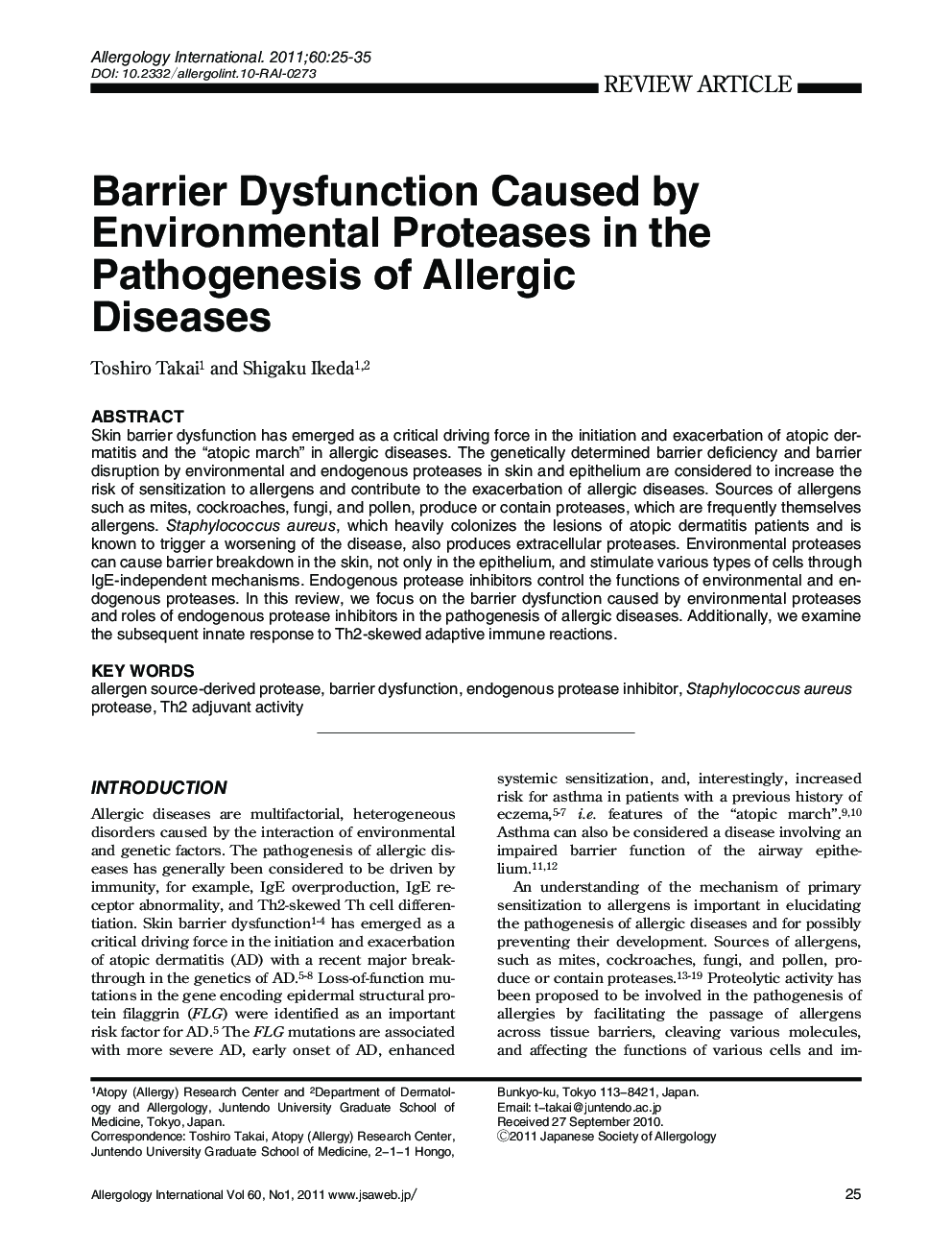| Article ID | Journal | Published Year | Pages | File Type |
|---|---|---|---|---|
| 3340959 | Allergology International | 2011 | 11 Pages |
ABSTRACTSkin barrier dysfunction has emerged as a critical driving force in the initiation and exacerbation of atopic dermatitis and the "atopic march" in allergic diseases. The genetically determined barrier deficiency and barrier disruption by environmental and endogenous proteases in skin and epithelium are considered to increase the risk of sensitization to allergens and contribute to the exacerbation of allergic diseases. Sources of allergens such as mites, cockroaches, fungi, and pollen, produce or contain proteases, which are frequently themselves allergens. Staphylococcus aureus, which heavily colonizes the lesions of atopic dermatitis patients and is known to trigger a worsening of the disease, also produces extracellular proteases. Environmental proteases can cause barrier breakdown in the skin, not only in the epithelium, and stimulate various types of cells through IgE-independent mechanisms. Endogenous protease inhibitors control the functions of environmental and endogenous proteases. In this review, we focus on the barrier dysfunction caused by environmental proteases and roles of endogenous protease inhibitors in the pathogenesis of allergic diseases. Additionally, we examine the subsequent innate response to Th2-skewed adaptive immune reactions.
